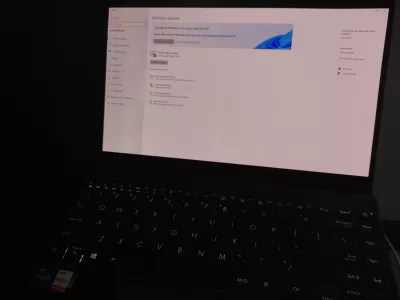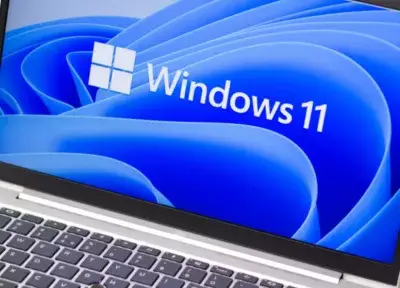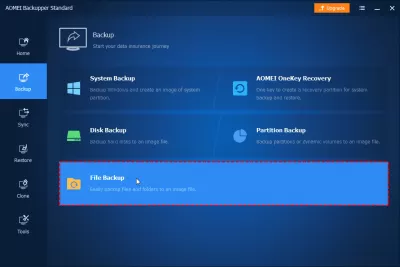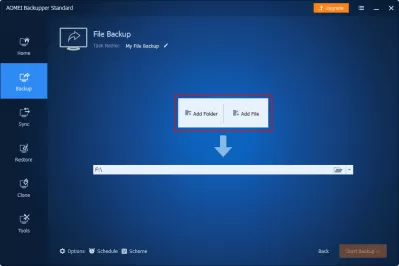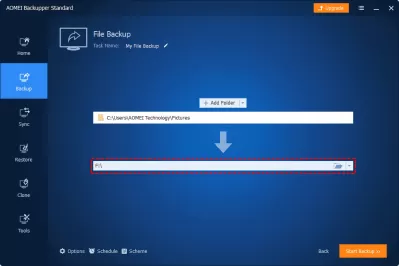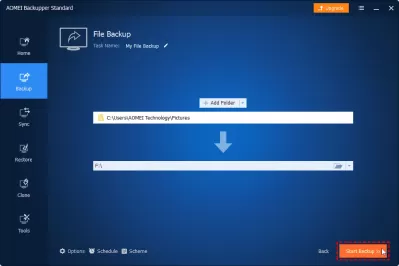3 Methods to Upgrade to Windows 11 and Keep Files Easily
- About Window 11
- Will I Lose Data Upgrading to Windows 11?
- Backup Important Files before You Upgrading Windows 11
- 3 backup methods:
- Scheduled backup:
- 2 backup modes:
- Various backup paths:
- Support different systems:
- Step 1. Open this backup software
- Step 2. Add file
- Step 3. Select location
- Step 4. Start backup
- Notes:
- Options:
- Schedule Backup:
- Scheme:
- Summary
- Frequently Asked Questions
About Window 11
Microsoft announced its latest operating system, Windows 11, at a special event on June 24, 2021, which will be officially released in October of the same year and offered as a free upgrade for compatible devices in early 2022. Compared with the previous system, Windows 11 has been improved and upgraded mainly in the new start menu, system tray, taskbar, etc to provide users with a better user experience.
- The Start menu in Windows 11 is located in the center of the taskbar. You can still move them all back to the left if you want.
- After upgrading to Windows 11, Widgets is in the center of the taskbar icons. And now it only shows news and interests, not desktop widgets.
- Some folder icons in File Explorer have been updated in the latest system. If you hover over the Maximize Window icon, you'll find an option to align your window in various ways.
Will I Lose Data Upgrading to Windows 11?
Windows 11, the latest operating system from Microsoft, has attracted a lot of attention since its release. Many Windows users want to upgrade to Windows 11 to experience the new features and operating interface. At the same time, users are also worried if upgrading their current system to Windows 11 will cause the problem of file loss.
It is not an absolute answer. Whether it will lead to file loss after upgrading the system depends on how you install Windows 11 on your computer. There are 3 ways for you to achieve the goal.
- Method 1. Use the Windows 11 Installation Assistant to upgrade your system to Windows 11
- Method 2. Download an ISO file and burn it to a USB flash drive and use it to install Windows 11.
- Method 3. Use Windows Media Creation Tool to create a bootable USB/DVD for Windows 11 installation.
Please note that with the first method you will not lose any files. But it is only available for some qualified PCs. Your computer needs to meet the conditions below:
- Your computer is running Windows 10 version 2004 or higher edition.
- You have a license for Windows 10.
- Your computer should meet the device specifications of Windows 11 for supported features and upgrade requirements.
- Your computer should have 9 GB of free disk space to download the leatest Windows 11 operating system.
The second and third methods may cause file loss during the installation process. If you would like to save your files and use these two methods to upgrade current operating system to Windows 11, it is recommended that you backup files in advance.
Backup Important Files before You Upgrading Windows 11
To avoid file loss from upgrading your system to Windows 11, it is recommended that you backup your important files before upgrading your system using Method 2 and Method 3. This can protect your data to the maximum extent. The free backup software - AOMEI Backupper Standard can help you easily achieve the goal.
3 backup methods:
It provides 3 backup methods, namely, Incremental backup, Differential backup and Full backup. Incremental and differential backup methods can help you improve backup efficiency and save target disk space as well as keep your file backups up-to-date.
Scheduled backup:
It supports scheduled backup, you can choose Daily, Weekly or Monthly frequency to backup your files regularly.
2 backup modes:
It provides different backup modes (intelligent sector backup or exact backup) and various compression levels (high/normal/low).
Various backup paths:
You can backup files to multiple storage devices, including USB, HDD, SSD, NAS, cloud drive, etc.
Support different systems:
It has good compatibility with operating systems (Windows 7, 8, 8.1, 10, 11, XP, Vista, etc.)
Before starting the backup process, you need to download the free and reliable backup software - AOMEI Backupper Standard. If you are a Windows Server user, you are able to pick AOMEI Backupper Server. Then you can follow the graphic tutorial below to backup important files before you upgrading to Windows 11 in just a few clicks.
Step 1. Open this backup software
Firstly, open this backup software, and select Backup > File Backup.
Step 2. Add file
Then you can click Add File or Add Folder to select the files or folders to be backed up.
Step 3. Select location
You need to select a destination location to store your file backup.
Step 4. Start backup
Confirm all your operations and click Start Backup to backup files before upgrading to Windows 11 and keep files.
Notes:
Options:
You are able to write comments to distinguish the backup tasks, compress or split the backup image file as well as enable email notification.
Schedule Backup:
This software allows you to backup files with fixed intervals, including Daily, Weekly, Monthly, Event trigger and USB plug in. The last two are available in the Pro version.
Scheme:
You can choose different backup methods. To help you save disk space by deleting older backups, you can enable automatic backup cleanup feature by upgrading to the Professional or higher version.
Summary
This article explains whether upgrading to Windows 11 will cause file loss. It depends on what method you use. But whichever method you use, it is essential to keep the files. You can choose the 3 methods mentioned in the article to upgrade to Windows 11 and keep files.
Windows 11 is an operating system for a hybrid environment. It has a simple and efficient interface that helps increase productivity and concentration, no matter where employees work.At the same time, Windows 11 incremental backup will help you avoid the problem of losing your important data.
Using Windows 11 installation assistant will not cause any file loss, but it has some requirements for your computer. Burning ISO file to a USB drive or using Windows Media Creation Tool to create a bootable USB/DVD can also achieve the goal. To avoid file loss, you need to back up your files in advance before using these two methods.
The free and reliable backup software - AOMEI Backupper Standard can backup your files quickly and keep them safe. It also supports scheduled backup and various backup methods in Windows 11, 10, 8, 7, etc.
In addition, it also provides System Backup, Disk Backup and Partition Backup to meet your different backup needs. You can download this software to discover more useful features.
And if you often back up to cloud drive, you can also try to use the free online cloud backup service - CBackup. It enables you to combine multiple free cloud storage services into a larger, even unlimited cloud backup space without paying money to buy storage for critical data backup.
Frequently Asked Questions
- What are the potential risks of upgrading to Windows 11 and how can users mitigate them?
- Potential risks include compatibility issues with software and drivers, and potential data loss. Users can mitigate these risks by ensuring their hardware meets Windows 11 requirements, backing up important files before upgrading, and checking software and driver compatibility in advance.
- Are there any specific system requirements or preparations needed before upgrading to Windows 11 to ensure a smooth transition?
- Before upgrading to Windows 11, it's important to check that your PC meets the minimum system requirements for Windows 11. This includes a compatible processor, adequate RAM and storage, and TPM 2.0 support. It's also recommended to backup all important files and ensure that your current applications are compatible with Windows 11.
